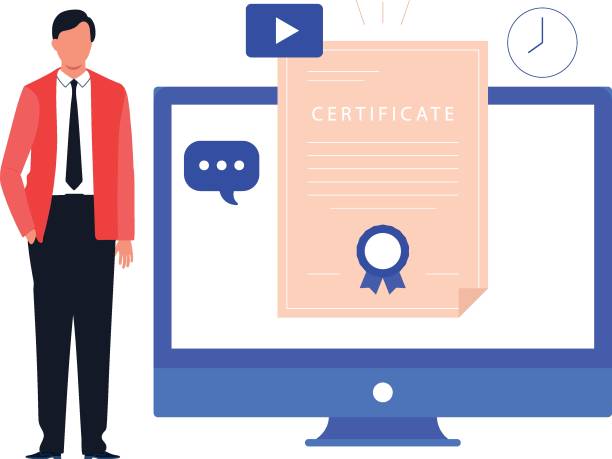Introduction to Personal Website Design and Its Importance

In the current digital age, having a personal website is no longer an option, but a necessity for every professional, artist, writer, or entrepreneur.
Personal website design is not only a showcase for your skills and experiences, but also a powerful platform for #online_branding, building a #network, and solidifying your #digital_presence.
This website is a place where you can tell your story, showcase your projects, and share your unique perspectives with the world.
Unlike social media platforms where you have limited control over content and format, a personal website gives you complete ownership and unlimited freedom to present whatever you want, however you like.
From presenting your resume and portfolio to blogging and even selling products, your website can be a versatile tool.
This comprehensive tutorial will help you get acquainted with the step-by-step process of personal website design and build a professional online platform for yourself.
Understanding the basics of building a site, from choosing a domain and hosting to designing the user interface and user experience, are all crucial for your online success.
Having a personal website also helps you gain better visibility in search engines and acquire new job or collaboration opportunities.
This platform showcases a professional image of you and builds trust with potential audiences and employers.
Are your e-commerce site visitors leaving before making a purchase? Don’t worry anymore! With Rasaweb’s professional e-commerce website design services, solve the problem of visitor-to-customer conversion for good!
✅ Significantly increase conversion rates and sales
✅ Unparalleled and attractive user experience
⚡ Contact us now for a free consultation!
Why Do You Need a Personal Website? Benefits and Necessities
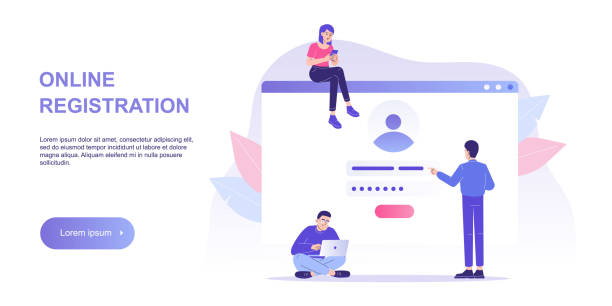
Perhaps this questionable content has formed in your mind: with numerous social networks like LinkedIn, Instagram, or Twitter, is there really a need for personal website design? The answer is a resounding yes! While social networks are powerful tools for communication and sharing, they have their own limitations.
Your control over your appearance, functionality, and data on these platforms is very minimal, and their algorithms can limit your reach to your audience.
In contrast, a personal website is your digital home; a place where you have complete ownership and can develop your personal brand without any restrictions.
This guide helps you understand the key benefits of having a personal website.
Firstly, this website allows you to showcase your resume and portfolio in a professional and attractive manner that a PDF file or LinkedIn page cannot.
You can present your work samples with full details, high-quality images, introductory videos, and even testimonials from previous clients.
Secondly, a personal website is an unparalleled tool for credibility building in your specialized field.
By publishing articles, case studies, or your insights on a blog, you can prove your knowledge and expertise and become recognized as an authority in your field.
Thirdly, this platform allows you to connect directly with your audience, collect email lists, and build a community of loyal followers.
This direct interaction is highly valuable for job opportunities, future collaborations, and even selling products or services.
Therefore, investing in personal website design is an investment in your professional future.
Key Elements in Designing a Successful Personal Website
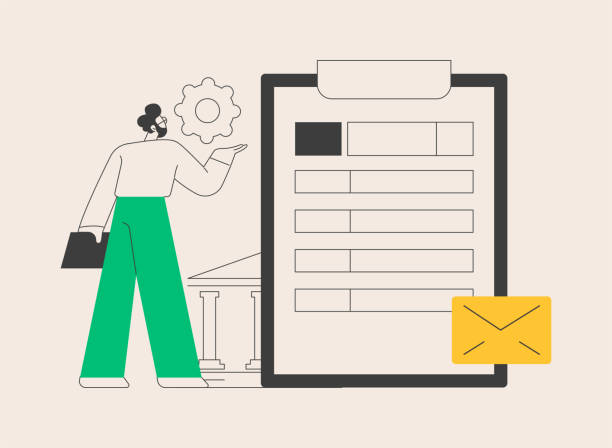
Successful personal website design is not just about having a beautiful page; it requires attention to key elements that provide an excellent user experience (UX) and fulfill your goals.
This specialized and educational section helps you identify the vital components of a standard personal website.
| Element | Explanation and Importance |
|---|---|
| About Me Page | A crucial section for narrating your personal and professional story. Includes biography, values, goals, and perhaps a professional photo. Introduces the audience to you. |
| Portfolio/Work Samples | A visual display of your best projects and achievements. Essential for designers, artists, writers, and developers. Quality and detail are important. |
| Blog | A platform for sharing knowledge, insights, and updates. Helps improve SEO and establish you as an expert. |
| Contact Page | Providing easy ways for your audience to contact you (contact form, email, social media links). High accessibility is essential. |
| Call-to-Action | Clear buttons or links that encourage visitors to take an action (e.g., “Contact Us”, “Download Resume”, “Order Now”). |
In addition to these pages, Responsive Design, which ensures your website displays well on all devices (mobile, tablet, desktop), is highly important.
Smooth and attractive User Experience (UX) and User Interface (UI) play a vital role in retaining visitors and encouraging them to explore your site further.
High loading speed, simple and intuitive navigation, and the use of high-quality images and videos are other important considerations in personal website design.
Each element should align well with the overall goal of your website and contribute to creating a cohesive and professional experience.
Choosing the Right Platform and Tools for Building a Personal Website
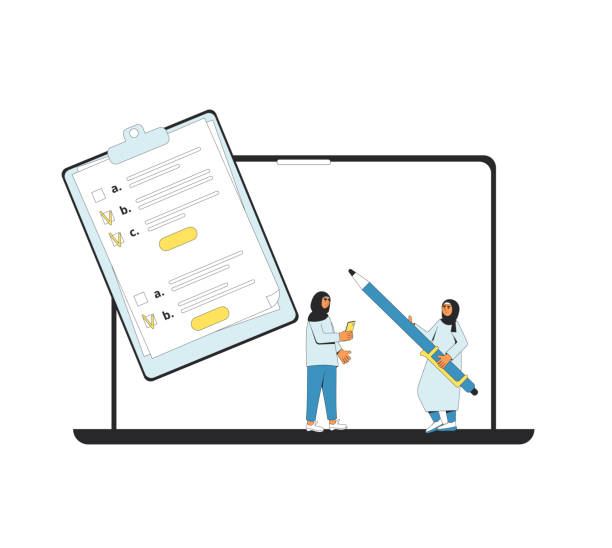
One of the first and most crucial decisions in the path of personal website design is choosing the right platform.
This choice depends on your technical knowledge, budget, and specific goals.
This specialized and guide section helps you find the best option for yourself.
Various platforms are available, each with its own advantages and disadvantages:
- Content Management Systems (CMS) like WordPress:
WordPress (wordpress.com) is the most popular CMS in the world, powering approximately 40% of all websites.
This platform is highly flexible, and with thousands of free and paid themes and plugins, you can build almost any type of website.
To use WordPress, you need hosting and a domain.
This option is ideal for those who want complete control over their site and are willing to learn a bit more technically.
For personal website design with WordPress, you need basic knowledge of installation and configuration, but after that, managing it is relatively easy. - Website Builders like Wix, Squarespace, and Zyro:
These platforms are excellent for users with little technical knowledge or who want to launch their website quickly and with minimal hassle.
They offer Drag-and-Drop tools that allow you to build beautiful pages without coding.
These options usually include hosting, domain, and ready-made templates.
Although their flexibility is less than CMSs, they are very suitable options for a simple and attractive personal website design. - Custom Coding with HTML, CSS, and JavaScript:
This method gives you maximum control and flexibility.
If you are a programmer or willing to learn, you can build your website from scratch with coding.
This approach is suitable for very specific projects or individuals who want to showcase their coding skills.
Of course, it requires more time and knowledge.
For a highly unique personal website design, this method is the best.
Before choosing, define your goals, assess your budget, and evaluate your comfort level with technical aspects.
Every platform can assist you in personal website design, but choosing the right one will smooth your path.
Does your company’s website perform as befits your brand? In today’s competitive world, your website is your most important online tool. Rasaweb, specializing in professional corporate website design, helps you to:
✅ Attract customer credibility and trust
✅ Convert website visitors into customers
⚡ Get a free consultation now!
Content Strategy for Attracting Audience to Your Personal Website

Content is the heart of any website, and this also applies to personal website design.
Having a beautifully designed website without engaging and targeted content is like a library without books.
This educational and analytical section helps you develop an effective content strategy for attracting and retaining your audience.
The first step in creating effective content is identifying your target audience.
Who do you want to attract? Potential employers? Colleagues? Clients? By understanding their needs and interests, you can produce content that is truly valuable to them.
Types of content you can include on your personal website are:
- Explanatory Content: This includes your “About Me”, “Services”, or “Products” pages.
This content should clearly explain who you are, what you do, and what value you offer. - Educational Content: A blog is the best platform for this type of content.
You can write educational articles, guides, tips, and tricks in your area of expertise.
This not only helps your visitors but also establishes you as an authority in your field. - Analytical Content: Publishing analyses, reviews, or in-depth insights on topics related to your industry demonstrates your expertise and intellectual power.
This type of content can include market trend analysis, tool reviews, or even case studies of your own projects. - Entertaining Content: Depending on your field, you can offer entertaining content such as personal stories, work experiences, or even podcasts and humorous videos related to your niche.
This type of content can help create a more human connection with your audience. - News-related Content: If you operate in a field with many changes, you can cover industry-related news and share your views on them.
This helps you stay up-to-date and demonstrate your dynamism.
The important point in personal website design and content strategy is consistency and quality.
Regularly publish new content and ensure that each piece of content adds value for your audience.
Using images, videos, and infographics can also significantly increase the appeal of your content.
Principles of Visual Design and User Experience in a Personal Website

When it comes to personal website design, aesthetics and functionality go hand in hand.
A website might have a lot of information, but if it’s not visually appealing or is difficult to use, visitors will quickly leave.
This specialized and explanatory section helps you get acquainted with the principles of visual design and user experience (UX) and implement them on your website.
The main goal is to create a smooth, intuitive, and pleasant user experience.
Responsive Design: Today, a significant portion of visitors access websites via mobile devices.
Therefore, it is essential that your website displays well on any screen size, from smartphones to large monitors.
This means automatically adjusting the layout, images, and text to provide the best user experience.
Ignoring this principle means losing a significant portion of your audience.
Simple and Intuitive Navigation: Visitors should be able to easily find what they are looking for.
A clear and logical navigation menu with distinct labels provides this capability.
Avoid excessive complexity and ensure that the most important parts of your site are easily accessible.
Personal website design should be such that the user can easily navigate it.
Color Scheme and Typography: The choice of colors and fonts plays a significant role in conveying your brand’s personality and creating a specific feeling for the visitor.
Use colors that align with your message and ensure text readability.
Fonts should be legible and of an appropriate size.
A balanced color palette and the use of a maximum of two or three font types help maintain simplicity and professionalism.
Whitespace: The empty space around elements on the page allows the user’s eyes to rest and helps the content stand out better.
Avoid overcrowding the page with content.
This space gives your website a sense of cleanliness and organization.
High-Quality Images and Videos: Visual content significantly enhances your website’s appeal.
Use high-quality images and videos relevant to your content.
Don’t forget to optimize them for the web (compression for faster loading).
These tips all contribute to an effective and user-friendly personal website design.
Optimizing a Personal Website for Search Engines (SEO)
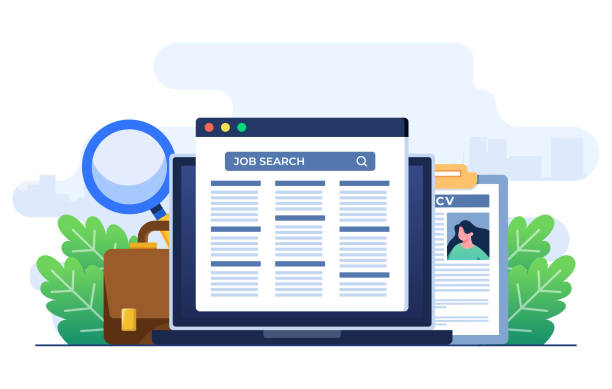
Personal website design without considering search engine optimization (SEO) is like having a beautiful shop in a dead-end alley.
No matter how great your content and design are, if no one can find you, your efforts will be futile.
This specialized and guide section helps you implement basic SEO principles for your personal website and increase your chances of being seen in search results.
| SEO Element | Explanation and Action |
|---|---|
| Keywords | Words your audience searches for to find your services or information. Naturally incorporate them into your website’s titles, text, and tags. |
| High-Quality and Relevant Content | Produce in-depth and valuable content that answers user questions and engages them. Longer, higher-quality content generally ranks better. |
| Title and Meta Description Optimization | Write appealing page titles that include main keywords. Write meta descriptions in a way that encourages users to click. |
| Page Speed | Faster sites rank better and offer a better user experience. Optimize images, use caching, and remove unnecessary code. |
| Internal/External Links | Linking to relevant pages on your site (internal) and to other reputable sources (external) increases your site’s authority. |
| Mobile-Friendliness | Ensure your website is fully responsive and displays well on mobile devices. |
In addition to these, building backlinks from other reputable websites to your website is a sign of authority for search engines.
You can acquire backlinks by participating in other blogs, networking, and creating shareable content.
Using Google Search Console and Google Analytics also helps you monitor your website’s performance and improve your SEO strategy.
Personal website design with SEO in mind is the key to your long-term online success.
Maintenance, Updates, and Security of a Personal Website
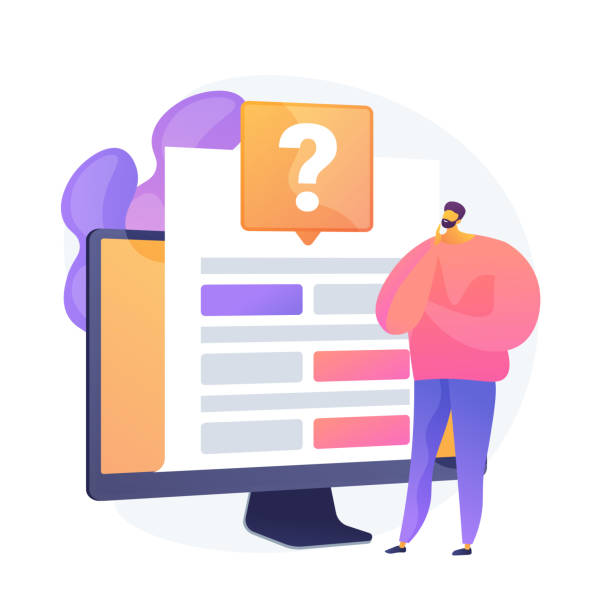
Building a personal website is just the beginning.
Regular maintenance, periodic updates, and security are vital aspects for the long-term success of your personal website design.
This guide and explanatory section helps you keep your website always active, secure, and up-to-date.
Regular Updates: Web platforms (like WordPress), themes, and plugins are constantly being updated.
These updates usually include security enhancements, bug fixes, and new feature additions.
Ignoring them can expose your site to security vulnerabilities and affect its performance.
Therefore, have a regular schedule for updating all components of your website.
Backup: Imagine all the content you painstakingly produced being lost due to a technical issue or cyber-attack! Regular backups (daily or weekly) of your entire website (including files and database) are essential.
Many hosting companies offer backup services, but it’s best to also keep a copy of your data in a secure location yourself.
Website Security: Websites are constant targets for hackers and malware.
To protect your personal website design, follow these tips:
- Use strong and unique passwords for the admin panel and FTP.
- Install a security plugin (if using a CMS) to help detect and block threats.
- Use an SSL certificate (HTTPS) which encrypts communication between the user’s browser and the server.
This is important not only for security but also for SEO. - Remove unused plugins and themes.
- Monitor server logs to identify suspicious activities.
Performance Monitoring: Regularly check your website’s loading speed with tools like Google PageSpeed Insights.
If the speed is low, optimizing images, reducing the number of HTTP requests, and using a Content Delivery Network (CDN) can help.
Also, check and fix broken links to improve user experience and prevent harm to your SEO.
An effective personal website design requires continuous care.
Is your e-commerce site ready to attract maximum customers and increase sales? Rasaweb transforms your online business with modern and efficient e-commerce website designs.
✅ Increased speed and improved SEO
✅ Excellent user experience on mobile and desktop⚡ Get a free e-commerce website design consultation from Rasaweb!
Opportunities for Earning and Growth Through a Personal Website
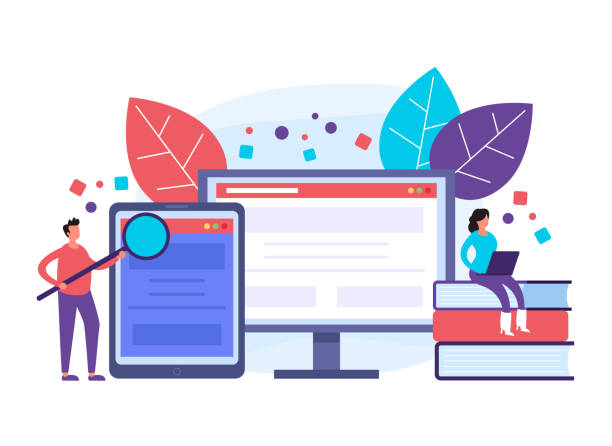
Personal website design can be more than just an online storefront; this platform has high potential for generating income and professional growth.
This informative, engaging, and analytical section shows you how you can turn your website into a profit center and open new pathways to success.
Freelancing and Service Provision: If you are a specialist in a specific field (such as writing, graphic design, programming, consulting, or teaching), your personal website is the best tool for attracting freelance clients.
You can explain your services in detail, showcase your portfolio, and include testimonials from satisfied clients.
A contact form or online booking system can greatly simplify the client acquisition process.
Many individuals have found new job opportunities through personal website design.
Selling Digital or Physical Products: If you have products to sell – whether e-books, online courses, website templates, graphic files, or even handmade physical products – you can set up a small online store on your website.
Platforms like WooCommerce for WordPress easily provide e-commerce functionalities.
Affiliate Marketing: In this method, you promote others’ products or services on your website and receive a commission for each sale or click that occurs through your link.
This can be an excellent way to earn passive income, especially if you specialize in a particular field and can recommend relevant products.
Advertising: If your website has high traffic, you can earn income from displaying ads (e.g., via Google AdSense).
However, this method is usually suitable for sites with very high visits and may affect user experience.
Membership and Premium Content: If you produce highly valuable and exclusive content, you can offer part of it for a fee, only for special members.
This revenue model is very effective for bloggers, coaches, and specialized content creators.
Donations: If you offer free content and have a loyal audience, you can ask them to make a small donation if they wish.
Alongside direct monetization, personal website design helps you strengthen your personal brand, become recognized as a thought leader, and establish valuable professional connections, all of which will contribute to your long-term growth and progress.
This platform is a bridge between you and countless opportunities.
Future Trends in Personal Website Design and Conclusion

The world of web is constantly evolving, and personal website design is no exception.
Understanding future trends can help you keep your website up-to-date and prepare for success in the coming years.
This analytical and informative section looks to the future and finally summarizes key points.
Artificial Intelligence (AI) and Personalization: AI will play a more prominent role in web development, from automated content generation to intelligent chatbots and personalized suggestions for users.
Personal websites can also leverage these capabilities to provide a unique experience for each visitor.
Voice Search: With the increasing popularity of voice assistants like Siri and Google Assistant, optimizing content for voice search will become increasingly important.
This means using more natural language and more direct answers to user questions.
Minimalist and Experience-Driven Design: Simplicity and focus on user experience will remain key design principles.
Minimalist designs with ample whitespace, large images, and concise, useful content help users achieve their goals faster.
Rich and Interactive Experiences: The use of subtle animations, background videos, Augmented Reality (AR), and Virtual Reality (VR) can make websites more interactive and engaging, especially for fields like art and design.
Focus on Security and Privacy: With increasing concerns about data and privacy, websites that have high security and show transparency to their users about how their data is collected and used will be more trustworthy.
Ultimately, personal website design is a continuous investment in your personal and professional brand.
This process, from platform selection to content creation, search engine optimization, and ongoing maintenance, requires attention and effort.
But given its immense potential in creating job opportunities, networking, and personal growth, it is worth the investment.
Your personal website is your digital canvas; a place where you can tell your unique story and establish your presence in the online world.
By using this guide, you can take effective steps towards personal website design and enhancing your online presence.
Frequently Asked Questions
| Question | Answer |
|---|---|
| Why should we have a personal website? | A personal website helps you build your personal brand, showcase your skills and portfolio, connect with your audience, and gain new job opportunities. |
| What steps should be taken for personal website design? | The steps include defining the goal, choosing a domain name and hosting, selecting a platform (e.g., WordPress), designing the user interface, content creation, search engine optimization (SEO), and launching. |
| Do I necessarily need to know coding for personal website design? | No, using Content Management Systems (CMS) like WordPress or Website Builders like Wix and Squarespace, you can design your website without needing to code. |
| What is a Domain Name and how do I choose it? | A domain name is your website’s address on the internet (e.g., yourname.com). It’s best to choose a short, memorable name relevant to you or your business, with a suitable extension (like .com, .ir). |
| What is Hosting and why do I need it? | Hosting is space on the internet where all your website’s files and information (such as images, texts, codes) are stored to be always accessible to users. Without hosting, your website will not be visible. |
| What should the content of a personal website include? | Content usually includes an About Me page, portfolio/work samples, services/skills, a blog (articles), contact information, and a contact form. |
| How can I optimize my personal website for search engines (SEO)? | By using relevant keywords, producing high-quality content, improving website loading speed, being mobile-responsive, building internal and external links, and optimizing title and description tags. |
| Why is Responsive Design important for a personal website? | Responsive design ensures that your website displays correctly on all devices (computer, tablet, mobile) and provides a good user experience, which is also important for SEO. |
| What should I do for personal website security? | Use an SSL certificate (HTTPS), regularly update the platform and plugins, use strong passwords, perform regular backups, and install a firewall or security plugins. |
| How can I increase my personal website’s traffic (visitors)? | Through SEO optimization, content marketing (blogging), social media activity, email marketing, online advertising, and collaboration with other websites. |
And other services of Rasaweb Advertising Agency in the field of advertising
Smart Website Development: A professional solution for user interaction focusing on SEO-driven content strategy.
Smart SEO: Professional optimization for online growth using key page optimization.
Smart Digital Advertising: Revolutionize sales increase with user experience customization.
Smart Content Strategy: A professional solution for increasing sales focusing on SEO-driven content strategy.
Smart Customer Journey Map: Designed for businesses seeking to manage campaigns through SEO-driven content strategy.
And over hundreds of other services in the field of internet advertising, advertising consulting, and organizational solutions
Internet Advertising | Advertising Strategy | Advertorials
Sources
- Personal Website Design
- How to Create a Personal Website?
- Comprehensive Web Design Guide
- Online Presence Strategies
✅? Build the future of your business in the digital world with Rasaweb Afarin! For professional corporate website design and launching targeted digital marketing campaigns, contact us today.
📍 Tehran, Mirdamad Street, next to Bank Markazi, Southern Kazeroon Alley, Ramin Alley, No. 6

